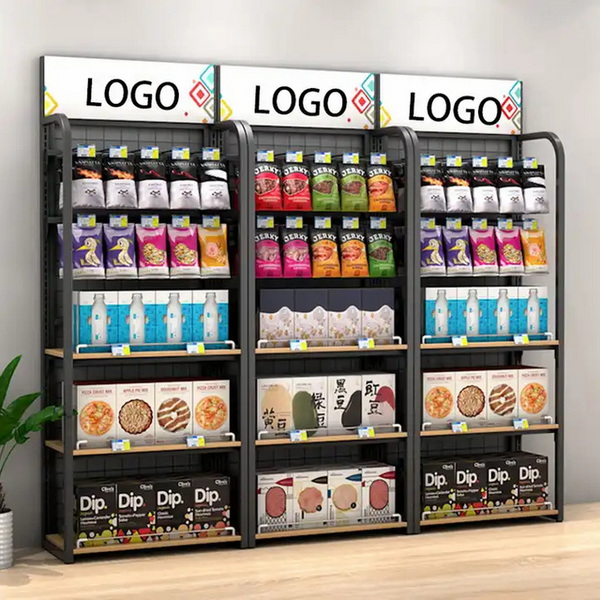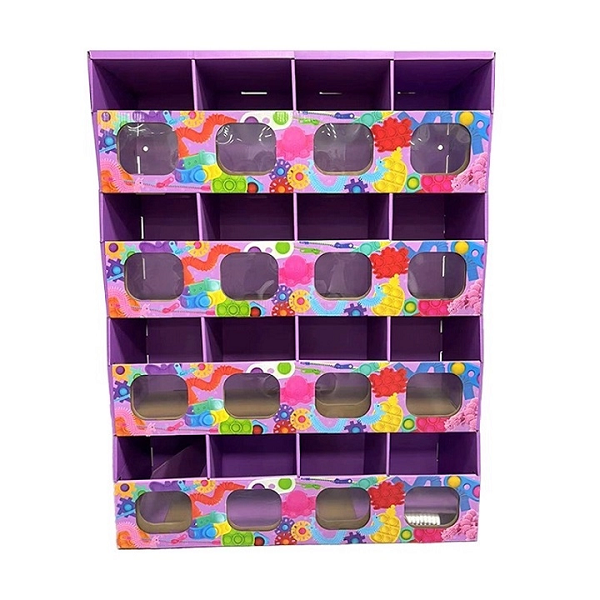Content Menu
● What Are Display Stands?
>> Key Features of Display Stands
● What Are Shelving Units?
>> Key Features of Shelving Units
● Advantages of Display Stands
● Advantages of Shelving Units
● Disadvantages of Display Stands
● Disadvantages of Shelving Units
● When to Use Display Stands
● When to Use Shelving Units
● Integrating Display Stands and Shelving Units
>> Best Practices for Integration
● Customization and OEM Services for Display Stands
>> Customization Options Include:
● Case Studies of Effective Use
>> Cosmetic Brand Launch
>> Supermarket Reorganization
>> Specialty Retail Pop-Up
● Conclusion
● FAQ
>> 1. What are the main differences between display stands and shelving units?
>> 2. Are display stands suitable for all types of products?
>> 3. How often should display stands be updated?
>> 4. Can display stands and shelving units be used together?
>> 5. What customization options are available for display stands?
In the competitive world of retail, the way products are displayed can make a significant difference in sales performance and customer experience. Retailers are constantly searching for the most effective ways to showcase their merchandise, and two of the most popular options are Display Stands and Shelving Units. Choosing the right solution can impact not only the aesthetics of a store but also its functionality, brand perception, and bottom line.
This comprehensive guide will delve into the differences between display stands and shelving units, exploring their advantages, disadvantages, and best use cases. Whether you are a brand owner, wholesaler, or manufacturer, understanding these options will help you make informed decisions that maximize your retail potential.

What Are Display Stands?
Display stands are specialized fixtures designed to highlight specific products or promotions. They come in various shapes, sizes, and materials, including cardboard, acrylic, metal, and plastic. These stands are typically portable, customizable, and can be strategically placed throughout a store to attract customer attention.
Key Features of Display Stands
- Customizable Designs: Tailored to fit brand themes and marketing campaigns.
- Portability: Easy to move and reposition.
- Versatility: Suitable for a wide range of products, from cosmetics to electronics.
- Branding Opportunities: Large surface areas for logos, graphics, and promotional messages.
What Are Shelving Units?
Shelving units are permanent or semi-permanent fixtures used to organize and store products in a retail environment. They are commonly made of metal, wood, or plastic and are designed to maximize space and product accessibility.
Key Features of Shelving Units
- Durability: Built to withstand heavy use and weight.
- Organization: Ideal for categorizing and storing large quantities of merchandise.
- Space Efficiency: Maximizes vertical and horizontal space.
- Consistency: Provides a uniform look throughout the store.
Advantages of Display Stands
Display stands are powerful tools for retailers looking to create visual impact and drive sales. Their ability to be customized means they can be designed to perfectly match a brand's identity or a specific campaign's theme. This customization extends beyond aesthetics; display stands can be engineered to fit the exact dimensions and weight of the products they hold, ensuring safety and stability.
One of the most significant advantages of display stands is their portability. Unlike shelving units, which are often fixed in place, display stands can be moved easily to different locations within the store. This flexibility allows retailers to adapt to changing promotional needs, seasonal campaigns, or store layout modifications without significant hassle or cost.
Display stands also excel at encouraging impulse purchases. Positioned near checkout counters or high-traffic areas, they can showcase small, attractive items that customers might grab on a whim. This strategic placement can increase average transaction values and boost overall sales.
Furthermore, display stands offer excellent branding opportunities. With ample space for vibrant graphics, logos, and messaging, they help reinforce brand recognition and communicate product benefits directly to consumers. This is particularly valuable for new product launches or limited-time offers where capturing attention quickly is crucial.
Advantages of Shelving Units
Shelving units provide a backbone for retail organization. Their primary strength lies in their capacity to hold large volumes of merchandise in an orderly and accessible fashion. Made from sturdy materials, shelving units are built to last, offering retailers a long-term solution for product storage and display.
One of the key benefits of shelving units is their ability to maximize space. By utilizing vertical height as well as floor area, shelving units enable stores to stock more products without expanding their footprint. This space efficiency is essential for retailers operating in limited retail space or high-rent locations.
Shelving units also contribute to a consistent and professional store appearance. Uniform shelving throughout the store creates a cohesive look that can enhance the shopping experience by making it easier for customers to navigate and locate products. Organized shelves reduce clutter and help maintain inventory visibility, which supports efficient stock management.
Additionally, shelving units are highly versatile. They can be configured with adjustable shelves, hooks, or bins to accommodate a variety of product types and sizes. This adaptability makes them suitable for almost any retail environment, from grocery stores to electronics outlets.
Disadvantages of Display Stands
Despite their many benefits, display stands have some limitations. Their capacity is generally lower compared to shelving units, making them unsuitable for displaying large quantities of products. This means they are best used as complementary fixtures rather than primary storage solutions.
Durability can also be a concern, especially for display stands made from cardboard or other lightweight materials. These stands may suffer damage over time, especially in high-traffic areas, requiring frequent replacement or maintenance to keep them looking fresh.
Another challenge with display stands is the need for regular updates. Because they are often tied to specific promotions or seasonal campaigns, retailers must invest time and resources into designing, producing, and installing new stands to keep the store environment engaging.
Disadvantages of Shelving Units
Shelving units, while sturdy and spacious, come with their own set of drawbacks. Their fixed or semi-fixed nature makes it difficult to quickly change store layouts or adapt to new merchandising strategies. Moving shelving units can be labor-intensive and disruptive to store operations.
Shelving units also offer limited opportunities for branding and creative display. Unlike display stands, they typically lack large graphic surfaces or interactive elements, which can make product presentation less engaging.
If not managed properly, shelving units can become cluttered or overcrowded, detracting from the shopping experience. Poorly organized shelves may confuse customers or make it harder to find products, potentially impacting sales negatively.

When to Use Display Stands
Display stands are an excellent choice when your goal is to create excitement and draw attention to specific products. They work best for:
- Product Launches: Introducing new items with high visibility.
- Seasonal Promotions: Highlighting holiday or event-specific merchandise.
- Point-of-Sale Areas: Encouraging impulse purchases at checkout.
- Brand Storytelling: Creating immersive brand experiences that engage customers emotionally.
Retailers should consider using display stands in areas where foot traffic is highest or where they want to create focal points that guide customer flow. Their portability also makes them ideal for pop-up shops, trade shows, and temporary retail spaces.
When to Use Shelving Units
Shelving units are indispensable for day-to-day retail operations. They are suited for:
- Everyday Merchandise: Stocking regular inventory that customers expect to find consistently.
- Bulk Products: Organizing large quantities of items efficiently.
- Aisle Displays: Creating structured shopping paths that enhance navigation.
- Long-Term Use: Providing durable, stable storage solutions that support ongoing retail needs.
Shelving units are particularly valuable in stores with extensive product ranges, where organization and space optimization are critical.
Integrating Display Stands and Shelving Units
For many retailers, the most effective strategy is to combine the strengths of both display stands and shelving units. Shelving units can form the structural foundation of the store, maintaining order and stocking the majority of products. Meanwhile, display stands can be used to create dynamic points of interest that capture shopper attention and drive targeted sales.
Best Practices for Integration
- Strategic Placement: Position display stands at entrances, aisle ends, and checkout areas to maximize visibility.
- Thematic Consistency: Ensure display stand designs complement the overall store aesthetic and branding.
- Regular Refreshes: Update display stands frequently to reflect new promotions and keep the environment lively.
- Balanced Layout: Avoid overcrowding by spacing out display stands and maintaining organized shelving.
By thoughtfully integrating both fixtures, retailers can create a shopping experience that is both practical and visually appealing.
Customization and OEM Services for Display Stands
Customization is a major advantage of display stands, especially when working with OEM (Original Equipment Manufacturer) services. Retailers and brands can collaborate with manufacturers to design display stands that perfectly fit their product specifications, brand identity, and marketing goals.
Customization Options Include:
- Material Selection: Choose from cardboard, plastic, metal, acrylic, or eco-friendly materials depending on durability and aesthetic needs.
- Printing and Graphics: Utilize full-color printing, embossing, UV coating, and other techniques to create eye-catching visuals.
- Functional Features: Add shelves, hooks, lighting, or even digital screens to enhance interactivity.
- Size and Shape: Design stands that fit specific product dimensions or create unique shapes that stand out on the sales floor.
OEM services ensure that display stands are not only attractive but also functional and aligned with brand messaging, providing a competitive edge in retail merchandising.
Case Studies of Effective Use
Cosmetic Brand Launch
A leading cosmetic brand leveraged custom display stands to launch a new skincare line. By placing these stands near store entrances and high-traffic areas, the brand created an immersive experience with interactive elements and bold graphics. This approach led to a 30% increase in product trials and significantly boosted sales during the launch period.
Supermarket Reorganization
A supermarket chain revamped its store layout by installing new shelving units designed for better product visibility and accessibility. The improved organization enhanced the shopping experience, resulting in higher customer satisfaction and increased average basket sizes.
Specialty Retail Pop-Up
A specialty retailer used portable display stands for a series of pop-up shops. The stands' lightweight and customizable nature allowed quick setup and teardown, while their striking designs attracted attention and reinforced brand identity, contributing to successful short-term sales campaigns.
Conclusion
Both display stands and shelving units play crucial roles in retail merchandising. Display stands excel at drawing attention, promoting brands, and driving impulse purchases, while shelving units provide structure, capacity, and organization. The best choice depends on your retail goals, product types, and marketing strategy.
For maximum impact, consider integrating both solutions to create a dynamic and inviting shopping environment. Custom display stands, in particular, offer unique branding opportunities and can be tailored to fit any campaign or product launch. By understanding the strengths and limitations of each option, retailers can make informed decisions that enhance both the customer experience and their bottom line.

FAQ
1. What are the main differences between display stands and shelving units?
Display stands are designed for promotional purposes and to highlight specific products, while shelving units are intended for organizing and storing a large quantity of merchandise. Display stands are more customizable and portable, whereas shelving units offer higher capacity and durability.
2. Are display stands suitable for all types of products?
Display stands are ideal for lightweight and medium-sized products, especially those requiring promotional focus. They may not be suitable for heavy or bulk items, which are better displayed on shelving units.
3. How often should display stands be updated?
Display stands should be updated regularly to keep promotions fresh and relevant. Many retailers update them seasonally or in line with marketing campaigns to maintain customer interest.
4. Can display stands and shelving units be used together?
Yes, combining display stands and shelving units can create a more engaging and effective retail environment. Display stands can highlight featured products, while shelving units provide organization and storage for the rest of the inventory.
5. What customization options are available for display stands?
Display stands can be customized in terms of size, shape, material, color, graphics, and functional features like lighting or digital screens. OEM services allow brands to create unique stands that align with their identity and marketing objectives.
































